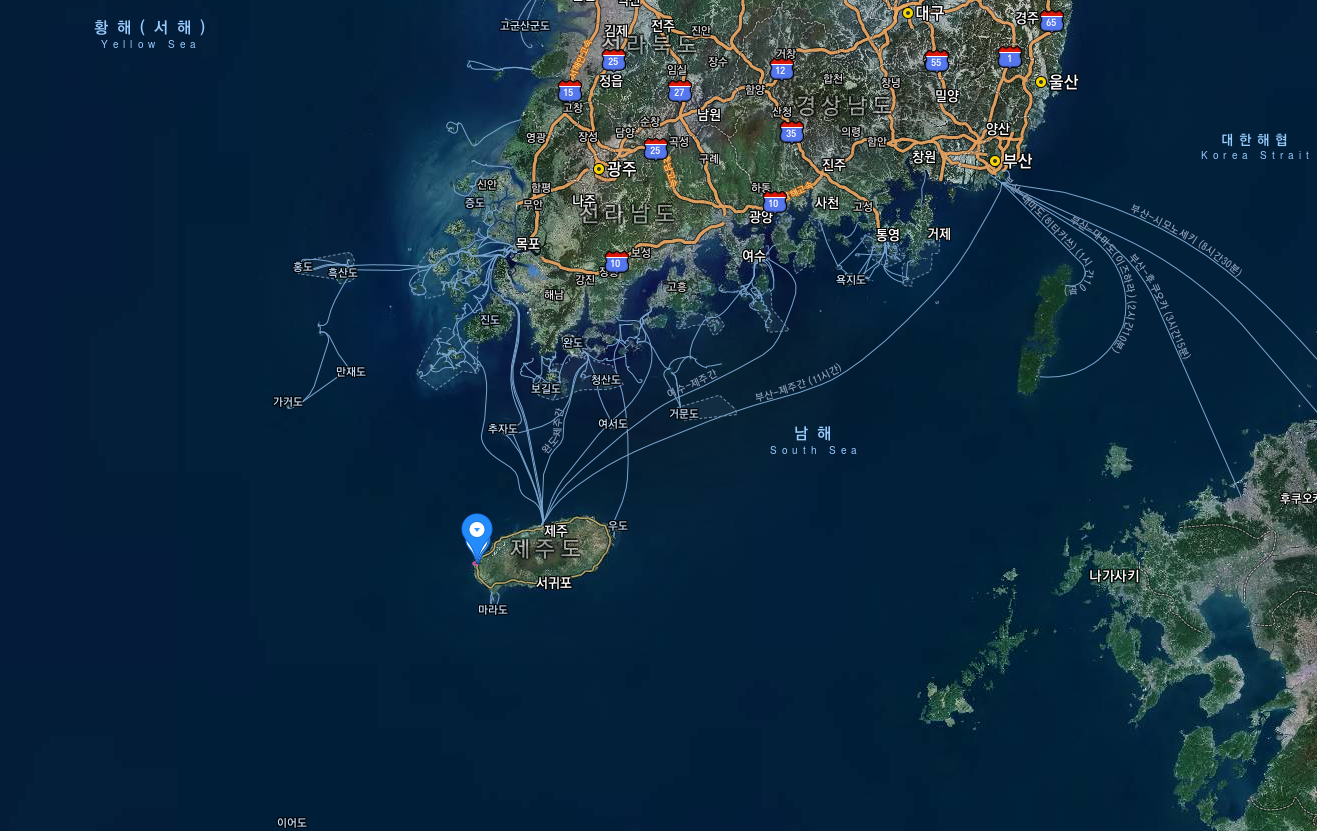*** released by the National Research Institute of Maritime Cultural Heritage of Korea
A large 3.1m anchor stone of a medieval Chinese trading vessel found under the sea off the coast of Sinchang-ri, Jeju
A large 3.1-meter long anchor stone has been discovered along with Chinese porcelain and coins in an underwater archaeological excavation in the waters off the coast of Sinchang-ri, Jeju, conducted jointly by the National Research Institute of Maritime Cultural Heritage (Director: Yeon-Soo Kim) of Cultural Heritage Administration and Jeju National Museum (Director: Yoo-Sik Kim) from late May to July of this year. The waters off the coast of Sinchang-ri, Jeju, is a place where many Chinese ceramics of the Southern Song Dynasty (1127~1279) have been found, and it is estimated that the relics were on board a Chinese trading vessel which was wrecked in the area.
* Anchor: a heavy hooked object which makes the boat stay in one place
* Anchor stone: a stone attached to the wooden anchor to sink it under the water

The anchor stone that has been excavated recently was split into two pieces, and the overall shape is a long diamond shape which is thicker in the central part and becomes thinner toward its end. All sides of the anchor stone were trimmed to be flat which is different from a traditional Korean anchor stone which was made by trimming a natural stone slightly. At the central part of the anchor stone, there is a 22cm thin processed groove on the part meeting the anchor shaft and another 7cm groove which was used for installation of the fixing nail.
* Anchor shaft: a long part which functions as the handle of the anchor
Anchor stones in such a shape were popular during the Song and Yuan dynasties in China. The shape and usage of the anchor are recorded in detail in a book titled “宣和奉使高麗圖經”(선화봉사고려도경, Xuanhe fengshi gaoli tujing), written by Seogeung, an envoy of Song China (“… hangs the anchor stone at the bottom and puts two wooden hooks on both sides of the stone. … Lowers down the anchor and drops it on the floor and fix it by pulling the anchor rope. Then the vessel stays at the place.”).
From the record, it seems that the anchor stone was used for mooring a vessel in combination with wooden anchor hooks. In China, an anchor in such a shape is called "Stone Anchor with Wooden Talons(木爪石碇)”.
* Anchor hook: A hook attached to the anchor

There are other Chinese anchor stones discovered in Korea: 3 pieces in the waters of Mado in Taean, and one piece in the waters of Myeongnyangdaecheop-ro in Jindo. Those anchor stones are more or less than 175cm in length, 11~13cm in thickness, and 100~130kg in weight. In comparison to them, the anchor stone which has been discovered recently in the waters of Sinchang-ri is 310cm in total length, 36cm in the width of the central part, 29cm in the thickness of the central part, and 586kg in weight, and thus it is much larger and heavier than the anchor stones found previously.
The biggest anchor stone of the Song Dynasty China among the ones that have been found so far is the anchor stone of Nanhai #1 which was found in the waters off Yangjiang City, Guangdong Province, China. This anchor stone is 310cm in length and 420kg in weight. Its length and shape are similar to the one found in Sinchang-ri waters, but the anchor stone of Sinchang-ri is about 1.4 times heavier in weight and from this we can estimate the size of the ship which wrecked in the waters of Sinchang-ri even indirectly.
* Nanhai #1: A trade ship of Song China which was salvaged in 2007. Its remaining length is 22.1m and remaining width is 9.35m, and more than 180,000 pieces of relics were found inside the ship.

Chinese coins were also found in the underwater archaeological excavation this time along with the anchor stone. The discovered coins are Gyeongdeok Wonbo (produced in 1004~1007), Hoeryeong Wonbo (1068~1077), Seonhwa Tongbo (1119~1125), all of which were produced in the Northern Song Dynasty. Among them, Gyeongdeok Wonbo had been found at the site of Sujeongsa Temple, a representative temple of Jeju during the Goryeo Dynasty, together with Chinese ceramics; and Hoeryeong Wonbo was found in Gonaeri historical site in Jeju. From the fact that relics of the same kinds have been discovered on the land of Jeju and under the sea off Jeju, we can guess the position of Jeju in the international exchanges between East Asian countries of the past through the sea route.

The existence of the underwater relics of Sinchang-ri, Jeju, became known to the world by the discovery of golden accessories in 1983. In the first official excavation investigation conducted last year, the excavation team discovered many ceramics produced in a kiln in Longquan, Zhejiang Province, during the Southern Song Dynasty of China and two stamps that seemed to have been used personally by merchants. The second underwater archaeological excavation conducted this year is very significant in that a large Chinese anchor stone and even the coins of Song China have been found and as a result we have secured critical materials for identification of the character of the underwater relics in the waters off Sinchang-ri.
The National Research Institute of Maritime Cultural Heritage of Cultural Heritage Administration is planning to continue research of the waters off Jeju including Sinchang-ri waters and will keep making efforts to improve the understanding of the maritime exchanges of the past by conducting various researches.

'NEWS & THESIS' 카테고리의 다른 글
| 봉황장식 신라 금동자물쇠를 실견하다 (0) | 2020.11.27 |
|---|---|
| 마라도나로 이름 바꾼다는 나폴리 축구장 (0) | 2020.11.27 |
| 유리건판이 포착한 이왕가박물관, Iwangga Museum captured by the glass plate (0) | 2020.11.26 |
| 1500年前大邱鳩岩洞古墳群第58號墳に銀裝飾「星」形馬装飾があふれだ (0) | 2020.11.25 |
| 皇龍寺を閉め金銅鳳凰裝飾ロック (0) | 2020.11.25 |




댓글